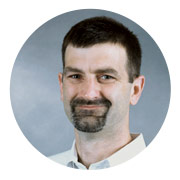Analog Digital Converter Design: Part 1
This tutorial will cover the principles and architectures of analog digital converter design. The tutorial begins with a review of domain conversion including sampling, aliasing, and usable bandwidth. Next, quantization will be discussed with a focus on effective dynamic range and linearity. The tutorial will conclude with a review of architectural survey including single slope/dual slope ADCs, flash ADCs, successive approximation, algorithmic ADCs, pipeline ADCs, sigma delta modulators and continuous time sigma delta.
What you will learn:
- Examine first principles including the importance of the domain conversion and keeping track of which domain we’re thinking in
- Discuss basic specifications in the transfer function, time and the frequency domains
Related courses:
Who should attend: Electrical Engineer, Design Engineer, Systems Engineer, Product Engineer, Lead Engineer, Project Engineer, QA/Quality, Planning Director, Solution Architect, Data Engineer, Software, Security Engineer, Network Engineer, AI/ML Engineer, Computer Engineer
Instructor
David H. Robertson

David H. Robertson received B.A. and B.E. degrees from Dartmouth College. Since 1985 he has been with the High-Speed Converter group of Analog Devices, where he has worked on a wide variety of D/A and A/D converters on complementary bipolar, BiCMOS and CMOS processes. He is presently the Product Line Director of ADI's High Speed Converter group. Dave holds 15 patents on converter and mixed signal circuits, has participated in two best panel ISSCC evening panel sessions, and was co-author of the paper that received the IEEE Journal of Solid State Circuits 1997 Best Paper Award.
Publication Year: 2010
ISBN: 978-1-4244-6204-9